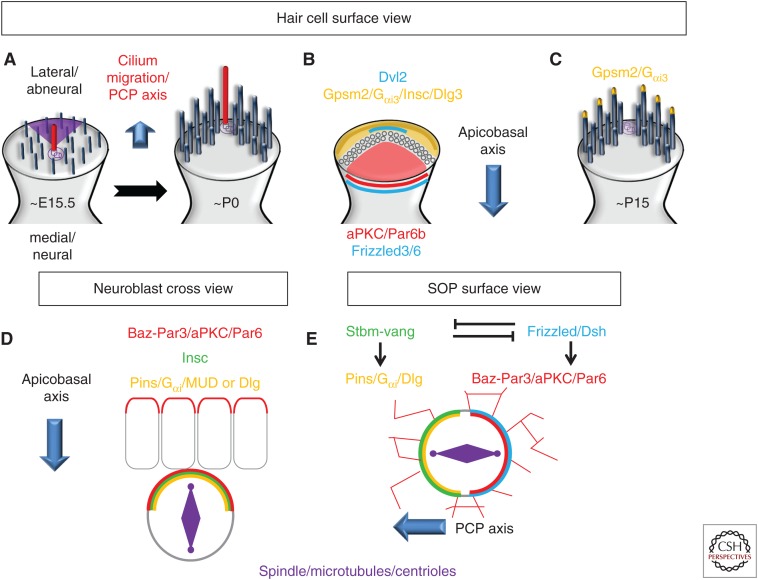Figure 4.
Differences in Gpsm2–Pins/Gαi localization between hair cells, Drosophila neuroblasts, sensory organ precursor (SOP). (A,B) In hair cells, between E15.5 to P0, the migration of the kinocilium toward the lateral/abneural side is instructed by an apical accumulation of Gpsm2/Gαi3/Insc/Dlg, whereas an aPKC/Par6 complex is restricted to the medial/neural side. Of note, Daple expression is restricted to the apicolateral junction (darker orange/brown). (C) In later stages, Gpsm2/Gαi3 accumulates at the tip of the longest stereocilia. (D) In delaminating neuroblasts, the Par-6/Baz–Par-3/aPKC and the Pins/Gαi/Mud or Dlg complexes colocalize at the apical cortex and control the apicobasal orientation of the spindle. Pins/Gαi/Mud or Dlg are recruited to the apical cortex through the presence of Insc. (E) In SOPs, Strabismus (Stbm)-Vang, localizes to the anterior cortex and recruits Pins, where they both work to restrict the Par complex to the posterior cortex, maintaining the spindle orientation parallel to the surface of the epithelium. PCP, planar cell polarity.

